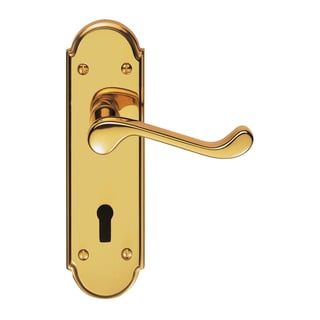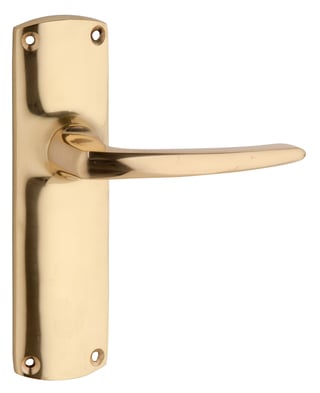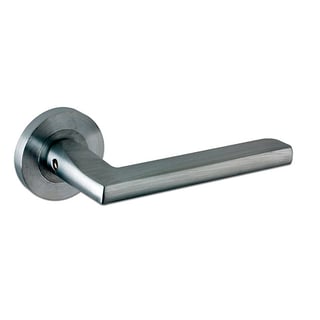Doors are either left-handed or right-handed, depending on which way they open. Doorknobs can be installed on either side of the door.
Handles are normally designed for either the right or left side of the door (i.e. you need a left/right pair for each door, one on this side of the door, the other on the other side of the door). (This appears to be a topic of confusion, and it seems that this confusion is wide-spread.... There happens to be a door-handle company that has run in to this, and they have put together a detailed description/diagram of the problem.... Unfortunately, Wikipedia disagrees about door handing .... i.e. there is lots of confusion. The point remains though, that the handles (often) have a 'handing')
You will likely find that less material is needed for a doorknob as well, so they are cheaper. The handle on a handle provides leverage, which means it takes less weight/force to operate the latch mechanism (and less force to overload the mechanism too), so a Handle's mechanism needs to be stronger to support the same forces a doorknob would be exposed to. Also, just the shape of the lever means there is more metal..... A knob would have much less raw-material than a handle.
If you expand the UX scope to include the sticker-shock when you purchase one, then knobs have a better UX ;-) (and, also probably a smaller 'carbon footprint', environmental cost....)
Here's a google-search images for 'door handle'.
Note how almost all the handles are specifically shaped.
Those that are not specifically shaped, often have a base-plate that makes the mounting different for different door-sides.
Only a few of the handles have a round/ambidextrous handle and mounting plate.
Out of interest, door handles normally have a 'stop' built in to the handle which limits the handle's travel to avoid stressing the actual bolt mechanism in the door (on the other hand, knobs don't have that leverage, so they let the mechanism in the door be the 'stop'). This mechanical stop requires the handle to be securely fastened to the door, so handles (with their additional leverage) need a stronger mounting (the mechanical stop in the handle also often prevents you from being able to reverse the handle on the mounting plate).
With the ambidextrous mounting plates on some of the handles, you would probably use a stronger door/lock in order to support the leverage on the handle, which transfers the cost to be elsewhere....



